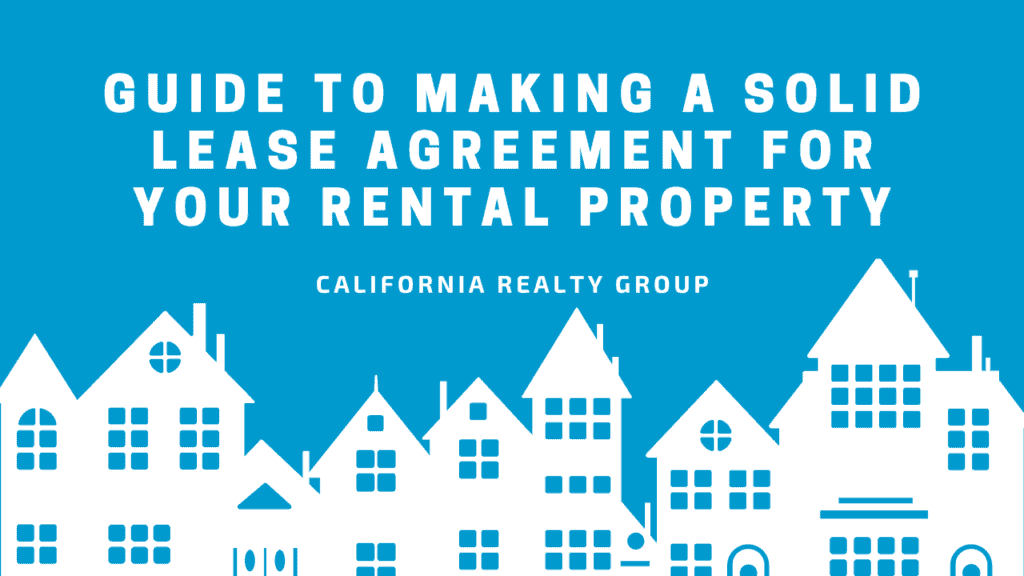Guide to Making a Solid Lease Agreement for Your Rental Property
Crafting a solid lease agreement is the cornerstone of a successful landlord-tenant relationship, yet it can often feel like navigating a maze without a map. How do you ensure your rental property is protected while also fostering a positive tenant experience?
In this comprehensive guide, we’ll walk through everything you need to know about creating a robust lease agreement that works for you and your tenants. From essential clauses to legal considerations, we’ll demystify the process, empowering you to confidently manage your rental property.
Let’s ensure your lease agreement is not just a piece of paper, but a tool for building a harmonious rental community.
Importance of a Solid Lease Agreement
A well-crafted lease agreement is not just a formality; it serves as the foundation of a successful landlord-tenant relationship. Clear and comprehensive lease agreements benefit both parties by setting expectations and minimizing potential disputes.
For landlords, a solid lease agreement provides legal protection, outlines rental terms, and ensures that both parties understand their rights and responsibilities. It helps in safeguarding the property, specifying rent payment terms, security deposit guidelines, and other essential details crucial for property management.
By creating a lease agreement that is thorough and clear, landlords can establish a positive and professional relationship with their tenants, setting the stage for a successful tenancy.
Essential Elements of a Lease Agreement
A lease agreement should include several key elements to protect the interests of both the landlord and the tenant. These elements typically include:
- Names of All Parties Involved: Clearly identify who is renting the property and who is responsible for the lease obligations.
- Rental Property Details: Describe the property being rented, including its address and any specific terms about the property’s use.
- Lease Term and Rent Amount: Specify the duration of the lease (e.g., one year, month-to-month) and the amount of rent due, including the due date and acceptable payment methods.
- Security Deposit and Pet Policy: Outline the amount of the security deposit, conditions for its return, and rules regarding pets, if applicable.
- Maintenance Responsibilities: Clarify who is responsible for maintaining the property and handling repairs, including emergency maintenance procedures.
- Late Fees and Eviction Procedures: Detail any penalties for late rent payments and the process for eviction if the tenant violates the lease agreement.
Clauses to Consider
In addition to the essential elements, landlords may want to include specific clauses to further protect their interests and clarify expectations. These can include:
- Utilities and Services: Specify which utilities and services (e.g., water, trash collection, internet) are included in the rent and which are the responsibility of the tenant.
- Subletting and Assignment: State whether the tenant can sublease the property or assign the lease to another party with the landlord’s approval.
- Access to the Property: Define when and under what circumstances the landlord or their representatives can enter the rental unit, ensuring compliance with local laws.
- Rules and Regulations: Establish rules for tenant behavior, such as noise restrictions, parking regulations, and rules about common areas, to promote a harmonious living environment.
Legal Considerations
Creating a lease agreement involves more than just outlining the terms; it also requires an understanding of local and state laws that govern rental properties. Landlords should familiarize themselves with these legal considerations to ensure their lease agreement is enforceable and compliant. Important legal considerations include:
- Local and State Laws: Research the specific laws and regulations that apply to rental properties in your area. This includes laws regarding security deposits, eviction procedures, and tenant rights.
- Fair Housing Laws: Understand fair housing laws to ensure that the lease agreement and tenant selection process comply with laws prohibiting discrimination based on factors such as race, color, religion, national origin, sex, familial status, or disability.
- Health and Safety Codes: Ensure that the rental property meets health and safety codes required by local authorities. These codes may affect the habitability of the property and the landlord’s responsibilities.
Drafting the Lease Agreement
Once you’ve considered the essential elements and legal aspects, it’s time to draft the lease agreement itself. Follow these steps to create a clear and effective lease agreement:
- Use Clear and Concise Language: Write the lease agreement in plain language that both parties can easily understand. Avoid using legal jargon that may confuse tenants.
- Include Detailed Terms: Clearly outline all terms and conditions of the tenancy, including rent amount, due date, security deposit amount, and any rules or restrictions.
- Review with the Tenant: Review the lease agreement with the tenant before they sign it. Ensure they understand all terms and answer any questions they may have.
- Make Necessary Revisions: If the tenant requests changes to the lease agreement, consider their requests and make necessary revisions if they are reasonable and lawful.
Enforcing the Lease Agreement
Creating a solid lease agreement is only the first step; landlords must also effectively enforce the terms throughout the tenancy. Here are some tips for enforcing the lease agreement:
- Communicate Effectively: Maintain open lines of communication with your tenants. Address any concerns or violations promptly and professionally.
- Document Violations: Keep detailed records of any lease violations or disputes. Documenting incidents can provide evidence in case of legal action.
- Follow Eviction Procedures: If a tenant consistently violates the lease agreement and other remedies fail, follow the legal procedures for eviction as outlined in your lease agreement and local laws.
Final Words
It is imperative for landlords to create a strong lease agreement in order to safeguard their property and keep favorable tenant relations. Landlords can reduce risks and guarantee a smooth tenancy by being aware of legal considerations, creating explicit conditions, and applying consistent enforcement of the agreement.
For further assistance in managing your rental property, consider consulting with California Realty Group. Their expertise in property management can provide guidance on lease agreements, tenant relations, and more, ensuring your investment remains secure and profitable.




